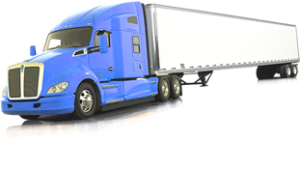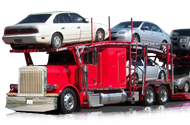Introduction To Vehicle Transport Regulations
Maximum Size Limits For Transported Vehicles
When it comes to transporting vehicles, adhering to maximum size limits is crucial for ensuring safety, regulatory compliance, and logistical efficiency. These limits can vary significantly depending on the country, state, or even local jurisdiction. Generally, the primary dimensions considered are height, width, length, and sometimes overall footprint.
Height restrictions are particularly important when navigating under bridges or through tunnels. In many regions, the maximum allowed height for a transported vehicle is around 13 to 14 feet (approximately 4 to 4.3 meters). Exceeding this limit may necessitate special permits and route planning to avoid low-clearance obstacles.
Width constraints are equally vital as they determine lane usage and the ability of other vehicles to safely pass. The standard maximum width for most transported vehicles is about 8.5 feet (2.6 meters). Vehicles exceeding this width often require “wide load” signage and may need escort vehicles for additional safety.
Length limitations ensure that transported vehicles can maneuver through turns and intersections without causing disruptions or hazards. The typical maximum length varies but generally hovers around 65 feet (20 meters) for combined vehicle-trailer setups in many places.
Finally, weight distribution plays a role in determining if a vehicle fits within permissible size limits. Heavier vehicles might be subject to stricter regulations due to their potential impact on road surfaces and bridges.
To sum up, understanding and adhering to these maximum size limits—height of approximately 13-14 feet, width of about 8.5 feet, and length near 65 feet—is essential for anyone involved in vehicle transport logistics. Failing to comply with these regulations can result in fines, delays, or even accidents that compromise public safety.
Weight Restrictions For Vehicle Transport
When it comes to vehicle transport, weight restrictions are a critical factor that must be carefully adhered to ensure safety and regulatory compliance. These limitations are dictated by various factors including the type of transport method, the infrastructure of the areas through which the vehicle will travel, and legal regulations set forth by governmental authorities.
In most cases, vehicle transport services will have a maximum allowable weight for vehicles being transported. This is generally influenced by the capacity of the transportation equipment—be it a flatbed truck, enclosed trailer, or rail car. For instance, most standard car carriers can handle vehicles up to 4,500 kg (approximately 10,000 lbs). Exceeding this limit could compromise the structural integrity of the carrier and pose significant safety risks.
Additionally, roadways themselves have weight restrictions that must be observed. Many highways and bridges have posted maximum weight limits to prevent damage to infrastructure. Transport companies must plan routes meticulously to avoid roads where their loads would surpass these limits. Failure to comply with such restrictions can lead not only to hefty fines but also potential accidents or road damage.
Weight distribution also plays an essential role in vehicle transport. Unevenly distributed weight can make a carrier unstable and difficult to maneuver. Transport companies often use specialized equipment like scales and balancing tools to ensure that each vehicle is loaded properly.
Regulatory bodies such as the Federal Motor Carrier Safety Administration (FMCSA) in the United States impose strict guidelines on commercial vehicle weights through Gross Vehicle Weight Ratings (GVWR). These ratings determine how much weight a truck can safely carry including its own mass plus cargo.
In summary, understanding and adhering to weight restrictions in vehicle transport is crucial for ensuring safety on roads, maintaining infrastructure integrity, and complying with legal requirements.
Special Permits For Oversized And Overweight Vehicles
When transporting oversized and overweight vehicles, adhering to standard size and weight restrictions can often be challenging. However, to accommodate these exceptional cases, many jurisdictions offer special permits designed specifically for such circumstances. These permits allow vehicles that exceed regular limits to travel legally on public roads while ensuring safety and minimizing damage to infrastructure.
To obtain a special permit for an oversized or overweight vehicle, the applicant typically needs to provide detailed information about the vehicle’s dimensions and weight, as well as the intended route of travel. Authorities may require a thorough analysis of the proposed route to ensure that it can safely support the vehicle’s size and weight. This includes checking bridge load capacities, road width, clearance heights under overpasses, and other critical infrastructural elements.
In addition to route analysis, permit issuance often involves stipulating specific travel conditions. For example, oversized or overweight vehicles may be restricted to traveling during certain hours—often at night or during off-peak traffic times—to minimize disruptions. Escort vehicles might also be mandated for added safety and guidance through complex routes.
Moreover, there are often fees associated with obtaining these permits which can vary based on the degree of excess in size or weight. In some cases, additional insurance coverage might be required to cover potential damages caused by transporting such large loads.
Special permits play a crucial role in balancing the need for transporting large industrial equipment or other heavy loads with public safety considerations and infrastructure protection. By regulating when and how these transports occur, authorities aim to mitigate risks while facilitating essential logistical operations within industries like construction, manufacturing, and energy sectors.
State-Specific Size And Weight Regulations
State-specific size and weight regulations for vehicle transport are essential to ensure road safety, infrastructure integrity, and efficient traffic management. These regulations can vary significantly from one state to another, reflecting local priorities, infrastructure capacities, and traffic conditions. Understanding these differences is crucial for transport companies to navigate legal requirements and avoid penalties.
In general, most states align with federal guidelines but impose additional restrictions tailored to their unique needs. For instance, while the federal government sets a maximum weight limit of 80,000 pounds for vehicles on the Interstate Highway System, states may enforce different limits on non-interstate roads. California is known for its stringent regulations due to its extensive highway network and heavy traffic congestion.
The state imposes specific axle weight limits and requires special permits for oversized loads.
Similarly, states like New York and Pennsylvania have their own sets of rules governing vehicle dimensions such as length, width, height, and gross vehicle weight. These states often require transporters to obtain oversize or overweight permits when their loads exceed standard legal limits. Additionally, some states have seasonal restrictions that adjust allowable weights depending on factors like road conditions during winter months.
Moreover, certain regions may have unique considerations based on geographical features or economic activities prevalent in the area. For example, agricultural states might provide exemptions or special allowances during harvest seasons to facilitate the transportation of farm equipment.
Navigating these diverse state-specific regulations necessitates careful planning and coordination by transport companies. Staying informed about regional laws helps ensure compliance while optimizing routes for efficiency and safety in vehicle transport operations across different jurisdictions.
Impact Of Size And Weight On Transportation Costs
The size and weight of a vehicle play a crucial role in determining transportation costs, affecting various aspects of the logistics process. Larger and heavier vehicles demand more resources for their transport, leading to increased expenses. One of the primary cost factors influenced by size and weight is fuel consumption. Heavier loads require more energy to move, thereby increasing fuel usage and costs.
Additionally, oversized vehicles may necessitate specialized equipment or trailers designed to handle their dimensions, further driving up expenses.
Another significant cost consideration is the need for permits and regulatory compliance. Transporting vehicles that exceed standard size or weight limits often requires obtaining special permits from relevant authorities. These permits can be costly and time-consuming to acquire, adding to the overall expense of transportation. Moreover, certain routes may have restrictions on heavy or oversized loads, necessitating detours that can increase travel distance and time, thus amplifying costs.
Labor costs are also impacted by vehicle size and weight. Handling larger or heavier vehicles typically requires more manpower or specialized skills, which can result in higher labor charges. In some cases, additional personnel may be needed for escort services to ensure safe passage through restricted areas.
Insurance premiums for transporting large or heavy vehicles are generally higher due to the increased risk associated with handling such loads. The potential for damage during transit is greater with oversized or overweight shipments, prompting insurers to raise their rates accordingly.
In summary, the size and weight of a vehicle directly influence transportation costs through higher fuel consumption, specialized equipment needs, permit fees, longer routes due to restrictions, increased labor requirements, and elevated insurance premiums. Understanding these factors is essential for accurate budgeting in vehicle transport logistics.
Equipment And Methods For Handling Large Vehicles
Handling large vehicles for transport requires specialized equipment and methods to ensure safety and efficiency. One of the most critical pieces of equipment is the hydraulic lift, which can raise heavy vehicles to allow for secure positioning on transport trailers. These lifts are often used in conjunction with heavy-duty ramps designed to accommodate the substantial weight and size of larger vehicles.
Flatbed trailers are another essential tool in this process. These trailers come with reinforced platforms capable of supporting immense loads, often featuring adjustable axles that can be spread out to distribute weight evenly. Additionally, some flatbed trailers are equipped with extendable decks to accommodate exceptionally long vehicles. For even larger dimensions, lowboy or double-drop trailers are utilized as they provide a lower platform height, enabling taller vehicles to be transported without exceeding road height restrictions.
Winches and tie-down systems play a pivotal role in securing these massive loads during transit. High-tensile strength chains and straps are employed along with anchor points specifically designed for heavy-duty applications. The use of electronic control systems ensures that tension is maintained consistently across all tie-downs, minimizing the risk of load shifts that could lead to accidents.
For oversized or overweight vehicles that exceed standard road regulations, pilot cars and police escorts may be required for safe navigation through traffic. Route surveys are conducted ahead of time to identify potential obstacles such as low bridges or narrow roads, ensuring a clear path from origin to destination.
In summary, the transportation of large vehicles necessitates advanced equipment like hydraulic lifts and specialized trailers as well as meticulous planning involving route assessments and safety protocols like secure tie-downs and escort services.
Compliance And Penalties For Violating Size And Weight Limits
Compliance with size and weight restrictions for vehicle transport is a critical aspect of road safety and infrastructure preservation. These regulations are meticulously outlined by transportation authorities to ensure that vehicles do not pose hazards to other road users and do not cause undue stress on roadways, bridges, and tunnels. Non-compliance can result in severe penalties, reflecting the seriousness with which these rules are enforced.
Firstly, operators must be acutely aware of both federal and state-specific regulations, as these can vary significantly. Federal guidelines set the baseline for interstate travel, while individual states may impose additional restrictions based on local infrastructure capabilities. For example, while the federal gross vehicle weight limit is typically 80,000 pounds for commercial trucks, some states might have lower thresholds or specific size limitations due to narrower roads or older bridges.
Penalties for violating these limits can be substantial. Financial fines often scale with the degree of the violation; exceeding weight limits by a small margin might incur a minor fine, but significant overages can lead to hefty penalties that quickly escalate into thousands of dollars. Additionally, repeated offenses can lead to more severe consequences such as suspension or revocation of operating licenses.
Beyond financial repercussions, non-compliance also poses reputational risks for transport companies. Violations recorded during roadside inspections are logged into databases that shippers and clients often review before contracting services. A poor compliance record can thus result in lost business opportunities.
In extreme cases where violations lead to accidents or infrastructure damage, legal liability could extend beyond fines to include repair costs and personal injury claims. Therefore, adhering strictly to size and weight regulations is not only a legal obligation but also a prudent business practice essential for sustaining long-term operational viability.



